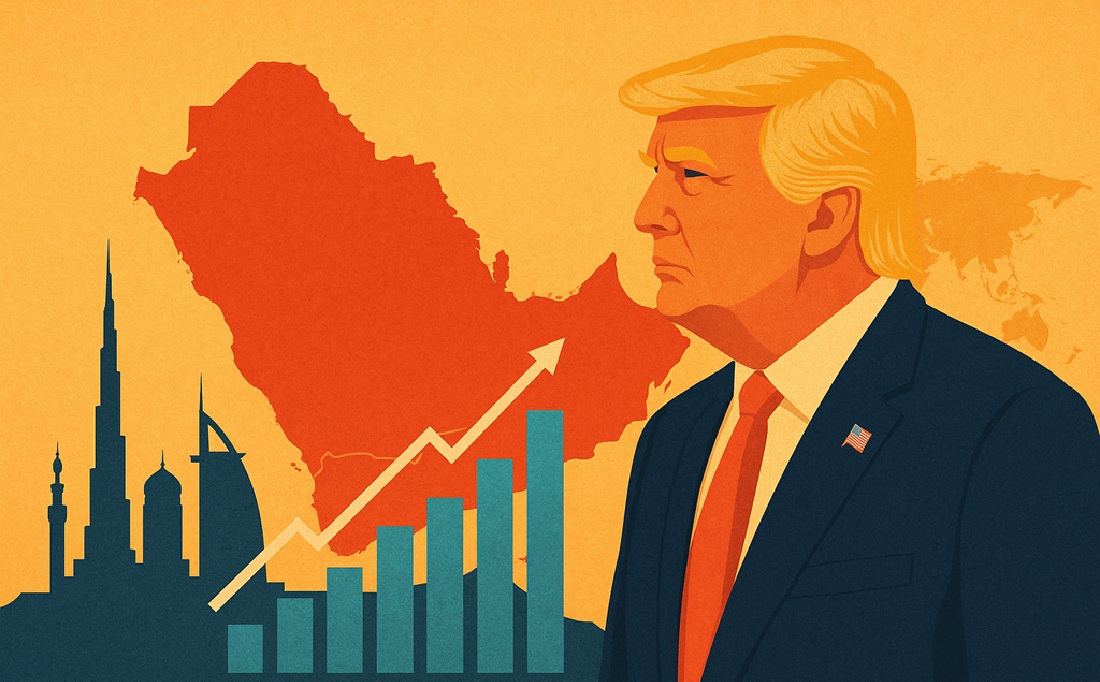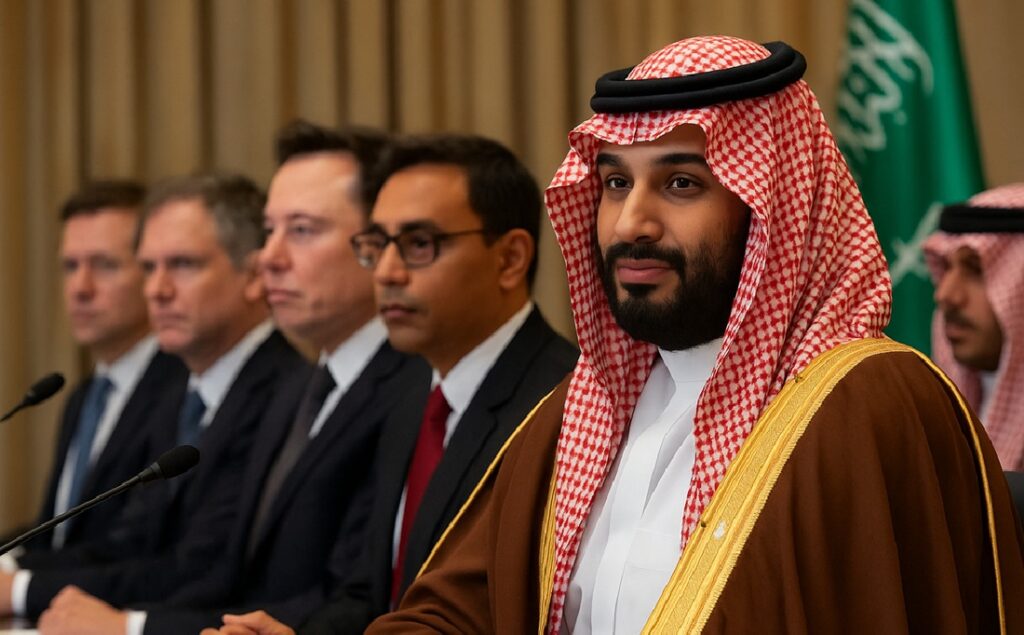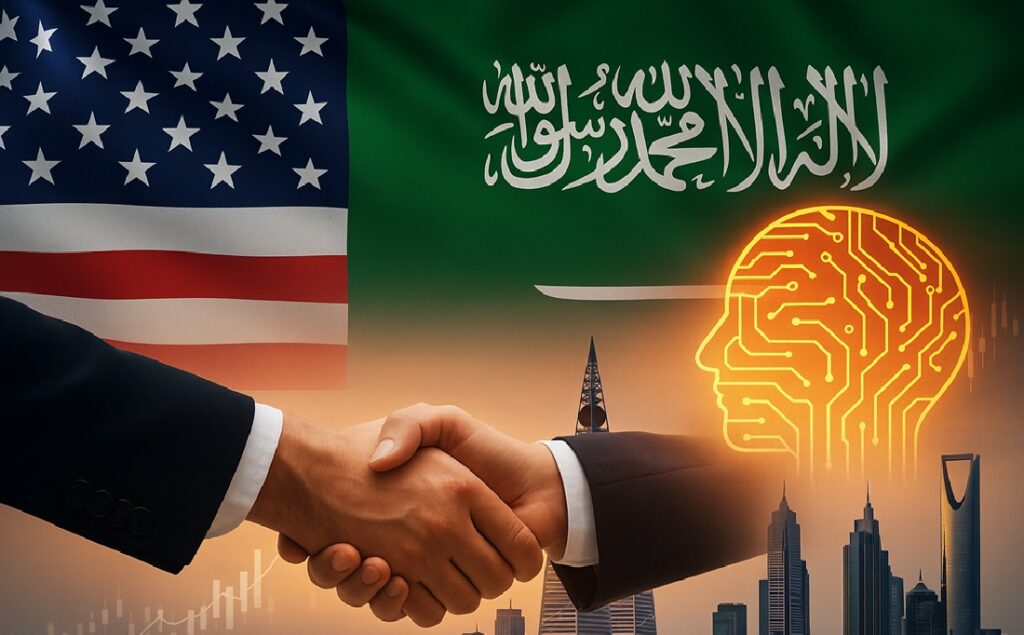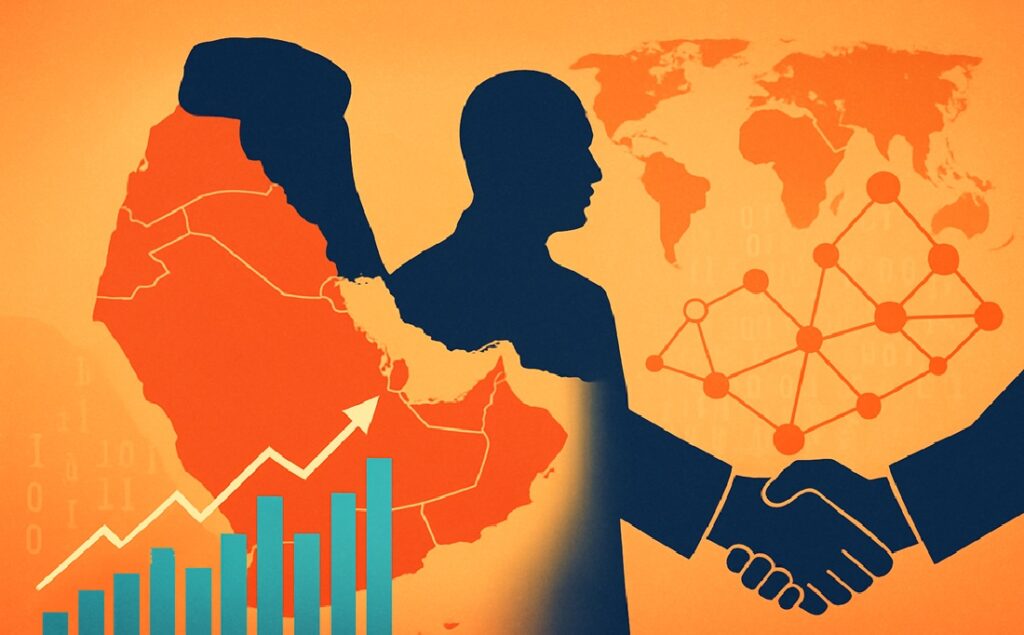Trump’s Middle East visit marks his return to the Gulf with $1.4 trillion in deals, AI partnerships, and a bold shift in regional economic alliances.
Trump’s Middle East visit to Saudi Arabia, the UAE, and Qatar—his first to the region in eight years—has grabbed global headlines. Concluding with investment commitments reportedly totaling $1.4 trillion, the trip marked a turning point in US-Gulf relations. Centered on economic collaboration, tech innovation, and artificial intelligence development, the visit signals a deeper shift in regional strategy and global diplomacy.
Trump’s Middle East Visit Focused on Economy
President Trump’s visit to the Middle East is dominating world news. This whirlwind tour carries enormous implications not only for the Gulf region but also for Iran, Israel, and the United States. According to a summary published in Newsweek, Trump began his high-profile Gulf tour in Riyadh, where the spotlight was firmly on business investments.
Trump arrived in Saudi Arabia alongside leading U.S. business executives, including Elon Musk and OpenAI’s Sam Altman. The occasion was the U.S.-Saudi Investment Forum, which emphasized partnerships in technology, infrastructure, and economic development. Trump’s mission during this part of the trip was clear: secure up to one trillion dollars in investment deals from Gulf nations. So far, the Gulf states have pledged $600 billion, with Trump pushing for more.
MBS and the Role of Saudi Arabia
Central to the narrative of Trump’s Middle East visit is Crown Prince Mohammed bin Salman, widely known as MBS. As Saudi Arabia’s de facto leader, MBS is also the architect of the kingdom’s Vision 2030 initiative. The visit was attended by top U.S. business leaders, including executives from Amazon, Nvidia, and BlackRock. Notably, the focus remained economic, prioritizing collaboration over security or military discussions.
Decision to Skip Israel and Its Geopolitical Meaning
Trump’s choice to bypass Israel during the trip raised questions among international observers. Some analysts interpreted the move as a shift in U.S. priorities, especially in light of Trump’s recent diplomatic engagements with Iran and the Houthis. However, the trip was consistently framed by Trump’s team and the media as an economic-focused mission, which helps explain the exclusion.
Still, behind the scenes, diplomacy remained a thread. Trump voiced hope that Saudi Arabia would eventually join the Abraham Accords and normalize relations with Israel. While not the headline focus, this possibility quietly underscored the visit.
Strategic Concessions: Sanctions and Nuclear Cooperation
One notable policy development during Trump’s Middle East visit was the decision to lift sanctions against Syria. Positioned as a humanitarian gesture, Trump stated the move would allow Syria access to resources necessary for rebuilding. Analysts viewed this as a concession aimed at securing further cooperation from Saudi Arabia.
In parallel, Saudi Arabia expressed support for Trump’s version of a nuclear agreement with Iran. This is a notable shift from their opposition to the Obama-era deal, and it highlights a growing diplomatic alignment between the U.S. and Gulf nations under Trump’s direction.
Vision 2030 and the Push for AI Leadership
Vision 2030 is Saudi Arabia’s bold plan to diversify its economy away from oil and establish itself as a center of innovation, particularly in artificial intelligence. With five years remaining in the plan’s timeline, urgency is building. As part of this vision, Saudi Arabia announced the launch of a new AI company called Humane, chaired by MBS and funded by the Public Investment Fund.
The company will offer AI services, cloud infrastructure, and advanced data systems, with a goal of making the kingdom a global leader in AI—second only to the United States. According to state media reports, this move is part of a wider strategy to attract talent and establish Saudi Arabia as a hub for technological advancement in the region.
Decoupling Normalization from Nuclear Cooperation
In a strategic shift, the United States under Trump has stopped requiring Saudi Arabia to normalize relations with Israel as a precondition for civil nuclear cooperation. Previously, these issues were closely tied. Now, Saudi Arabia is allowed to move forward with developing its civil nuclear program independently of its diplomatic position on Israel.
This change is seen by observers as another incentive aimed at strengthening long-term U.S.-Saudi cooperation. It reflects a broader diplomatic approach that intertwines economic incentives, geopolitical alignment, and gradual normalization.
The Broader Significance of Trump’s Middle East Visit
Trump’s Middle East visit reflects a broader realignment of global alliances and regional priorities. The trip, anchored in economic cooperation and technological advancement, signals a shift away from traditional defense-centered diplomacy toward investment-led influence. The increasing focus on artificial intelligence, infrastructure, and long-term partnerships marks a new phase in U.S.-Gulf relations.
While some religious and geopolitical commentators have drawn symbolic comparisons to biblical prophecy, the practical outcomes of the visit point to a reshaped global strategy. The growing intersection of tech, diplomacy, and regional politics is set to define the next decade of U.S. foreign engagement in the Middle East.
Conclusion
Trump’s Middle East visit is historic in scope and strategic in purpose. From trillion-dollar investments to diplomatic recalibrations, the trip reflects a calculated effort to deepen economic ties, boost AI development, and redefine U.S. relationships in the Gulf. As Vision 2030 gains momentum and the Abraham Accords remain a key narrative thread, this visit will likely be remembered as a pivotal chapter in the evolution of regional power dynamics.




